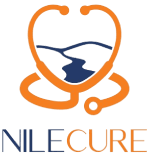
Vitiligo treatment aims to restore pigment to the skin affected by depigmentation. While there is no cure for vitiligo, several treatment options can help manage the condition and improve the appearance of affected skin areas. Here are some common vitiligo treatment approaches:
1. Topical Corticosteroids: These anti-inflammatory medications can help repigment the skin by suppressing the immune response that attacks melanocytes (pigment-producing cells). Topical corticosteroids are most effective for treating small, localized patches of vitiligo.
2. Topical Calcineurin Inhibitors: Tacrolimus (Protopic) and pimecrolimus (Elidel) are topical immunomodulators that can be used to treat vitiligo, especially in sensitive areas such as the face and genitals. They work by inhibiting the immune response and promoting repigmentation.
3. Topical Psoralen Combined with UVA (PUVA) Therapy:** PUVA therapy involves applying a photosensitizing medication called psoralen to the skin, followed by exposure to ultraviolet A (UVA) light. This combination stimulates melanocyte activity and promotes repigmentation. PUVA therapy is often used for widespread vitiligo and may require several sessions for noticeable results.
4. **Narrowband UVB Therapy:** Narrowband UVB phototherapy exposes the affected skin to a specific wavelength of ultraviolet B (UVB) light, which helps stimulate melanocyte regeneration and repigmentation. Narrowband UVB therapy is considered safer and more effective than PUVA therapy and is often recommended for treating vitiligo patches over larger areas of the body.
5. Excimer Laser Therapy: Excimer lasers deliver concentrated UVB light directly to vitiligo-affected skin patches, targeting depigmented areas while sparing surrounding healthy skin. Excimer laser therapy can be particularly effective for localized vitiligo patches and may produce faster results than traditional phototherapy.
6. Depigmentation: In cases where vitiligo affects a significant portion of the body, depigmentation therapy may be an option. This involves applying depigmenting agents to unaffected areas of the skin to lighten them and achieve a more uniform skin tone. Depigmentation is typically reserved for individuals with extensive vitiligo who have not responded to other treatments.
7. Cosmetic Camouflage: Cosmetic camouflage products, such as makeup or self-tanning lotions, can help conceal vitiligo patches and improve the appearance of the skin. These products provide temporary coverage and are often used in conjunction with other treatment modalities.
It’s essential for individuals with vitiligo to consult with a dermatologist or healthcare provider to determine the most appropriate treatment plan based on the extent and severity of their condition, as well as their overall health and treatment goals. Treatment efficacy can vary depending on various factors, and a combination of therapies may be recommended for optimal results.

